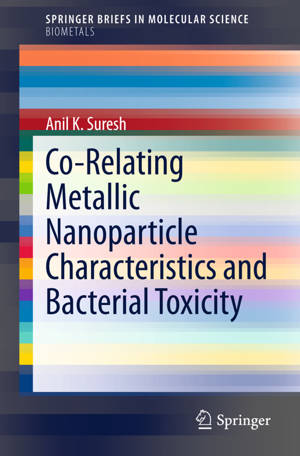
- Afhalen na 1 uur in een winkel met voorraad
- Gratis thuislevering in België vanaf € 30
- Ruim aanbod met 7 miljoen producten
- Afhalen na 1 uur in een winkel met voorraad
- Gratis thuislevering in België vanaf € 30
- Ruim aanbod met 7 miljoen producten
Zoeken
Co-Relating Metallic Nanoparticle Characteristics and Bacterial Toxicity
Anil K Suresh
€ 83,95
+ 167 punten
Omschrijving
This brief gives a concise overview of nanoparticles and their microbial toxicity. It introduces various nanoparticles that are considered lethal to microbial cells (bacteria, virus and fungus) placing an emphasis on metal and metal oxide nanoparticles. The synthesis procedures (physical, chemical, microbial) that are often employed in their fabrication are also outlined. The interaction of various nanoparticles with microbes is described with attention given to the role of additives in the form of solvents, surfactants, capping materials. Commonly used experimental and analytical techniques that are often used to evaluate and determine the toxicity of nanoparticles towards different microorganisms are presented and comparative assessments on the differences between these procedures are described. The brief ends by explaining the toxicity of metal and metal oxide nanoparticles to microorganisms.
Specificaties
Betrokkenen
- Auteur(s):
- Uitgeverij:
Inhoud
- Aantal bladzijden:
- 47
- Taal:
- Engels
- Reeks:
Eigenschappen
- Productcode (EAN):
- 9783319167954
- Verschijningsdatum:
- 10/04/2015
- Uitvoering:
- Paperback
- Formaat:
- Trade paperback (VS)
- Afmetingen:
- 156 mm x 234 mm
- Gewicht:
- 95 g

Alleen bij Standaard Boekhandel
+ 167 punten op je klantenkaart van Standaard Boekhandel
Beoordelingen
We publiceren alleen reviews die voldoen aan de voorwaarden voor reviews. Bekijk onze voorwaarden voor reviews.








